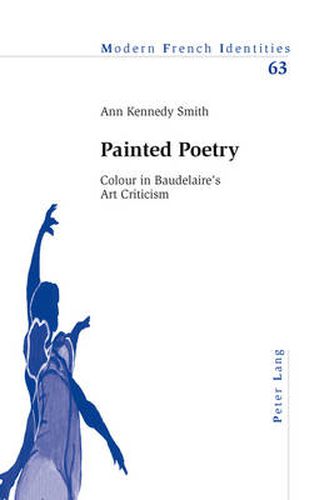Readings Newsletter
Become a Readings Member to make your shopping experience even easier.
Sign in or sign up for free!
You’re not far away from qualifying for FREE standard shipping within Australia
You’ve qualified for FREE standard shipping within Australia
The cart is loading…






Before becoming a poet, Charles Baudelaire was an art critic; and he made his literary debut with the Salon de 1845. Its failure to find a receptive audience led him to write the groundbreaking Salon de 1846 with its pivotal chapter on colour, in which Baudelaire challenged fundamental critical concepts of art by insisting on colour’s complexity, expressivity and modernity. Through a close reading of his critical essays on art, this book examines how Baudelaire’s thoughts on colour developed throughout his life and sets them in the context of traditional views of colour. What effect did the new scientific theories of colour harmony, filtered through his conversations with Delacroix and other artists, have on Baudelaire? Why did he see Daumier as a colourist, but not Ingres? What made him turn his back on French art in 1859 and which artist changed his mind? Baudelaire’s interest in a highly personal form of colour symbolism is investigated, as well as the part that colour plays in developing his later, central idea of a creative and poetic imagination capable of translating all the arts.
$9.00 standard shipping within Australia
FREE standard shipping within Australia for orders over $100.00
Express & International shipping calculated at checkout
Before becoming a poet, Charles Baudelaire was an art critic; and he made his literary debut with the Salon de 1845. Its failure to find a receptive audience led him to write the groundbreaking Salon de 1846 with its pivotal chapter on colour, in which Baudelaire challenged fundamental critical concepts of art by insisting on colour’s complexity, expressivity and modernity. Through a close reading of his critical essays on art, this book examines how Baudelaire’s thoughts on colour developed throughout his life and sets them in the context of traditional views of colour. What effect did the new scientific theories of colour harmony, filtered through his conversations with Delacroix and other artists, have on Baudelaire? Why did he see Daumier as a colourist, but not Ingres? What made him turn his back on French art in 1859 and which artist changed his mind? Baudelaire’s interest in a highly personal form of colour symbolism is investigated, as well as the part that colour plays in developing his later, central idea of a creative and poetic imagination capable of translating all the arts.